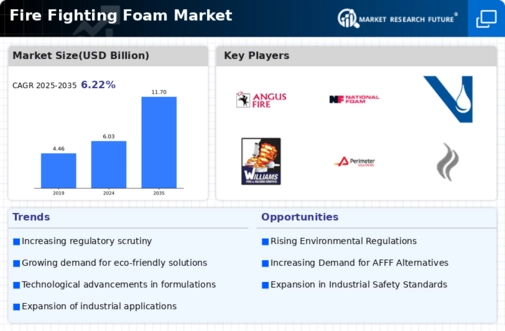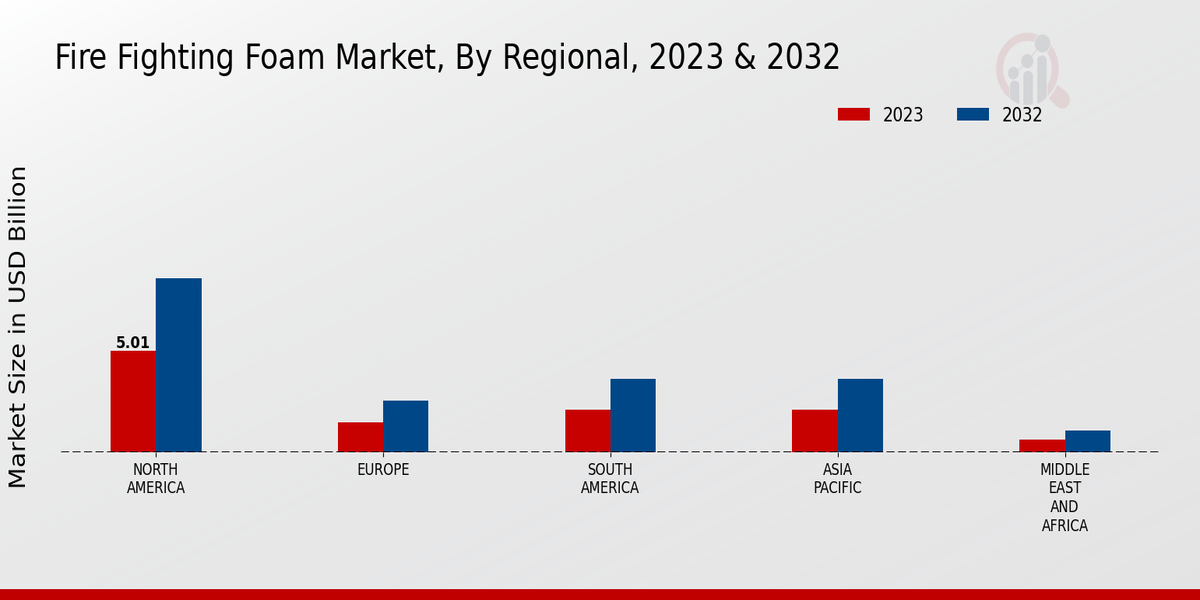Regulatory Compliance
Stringent regulations regarding fire safety and environmental protection are propelling the Global Fire Fighting Foam Market Industry forward. Governments worldwide are implementing stricter guidelines to ensure that firefighting agents meet safety and environmental standards. For example, the Environmental Protection Agency in the United States has established regulations that govern the use of firefighting foams containing per- and polyfluoroalkyl substances (PFAS). This regulatory landscape encourages manufacturers to innovate and develop eco-friendly alternatives, thereby expanding the market. As compliance becomes a priority, the industry is likely to witness sustained growth, with projections indicating a market size of 11.7 USD Billion by 2035.
Increasing Fire Incidents
The Global Fire Fighting Foam Market Industry is experiencing growth due to the rising frequency of fire incidents across various sectors, including industrial, commercial, and residential. For instance, the National Fire Protection Association reports that fire departments in the United States responded to over 1.3 million fires in 2022, highlighting the urgent need for effective firefighting solutions. This trend is expected to continue, driving demand for fire fighting foam, which is crucial for suppressing flammable liquid fires. As the market evolves, the industry is projected to reach a valuation of 6.03 USD Billion by 2024, indicating a robust response to increasing fire safety requirements.
Technological Advancements
Innovations in firefighting technology are significantly influencing the Global Fire Fighting Foam Market Industry. Advanced formulations and delivery systems are enhancing the effectiveness of firefighting foams, making them more efficient in combating various types of fires. For instance, the development of high-expansion foams and alcohol-resistant foams has improved fire suppression capabilities, particularly in industrial settings. These advancements not only increase safety but also reduce environmental impact. As a result, the market is expected to grow at a compound annual growth rate of 6.22% from 2025 to 2035, reflecting the industry's commitment to adopting cutting-edge technologies.
Expansion of Industrial Sector
The expansion of the industrial sector globally is a critical factor contributing to the growth of the Global Fire Fighting Foam Market Industry. Industries such as oil and gas, chemicals, and manufacturing are increasingly recognizing the risks associated with flammable materials and are investing in advanced firefighting solutions. The oil and gas sector, in particular, has seen a surge in demand for effective firefighting foams due to the high risk of fire incidents. As industries expand and diversify, the need for reliable fire suppression systems becomes paramount, further driving market growth. This trend aligns with the projected increase in market size, reaching 6.03 USD Billion by 2024.
Growing Awareness of Fire Safety
The heightened awareness of fire safety among businesses and the general public is a significant driver of the Global Fire Fighting Foam Market Industry. Educational campaigns and training programs are increasingly emphasizing the importance of fire prevention and effective response strategies. This awareness is leading to greater investments in firefighting equipment and training, including the use of specialized foams. For example, many organizations are now conducting regular fire drills and safety training sessions, which incorporate the use of firefighting foams. This cultural shift towards proactive fire safety measures is likely to sustain market growth as more entities prioritize fire safety.






















